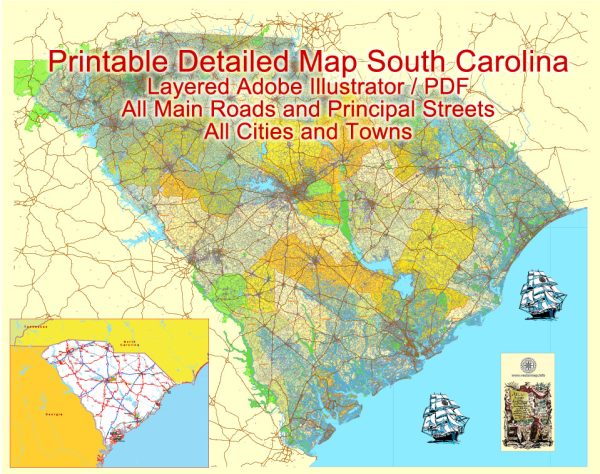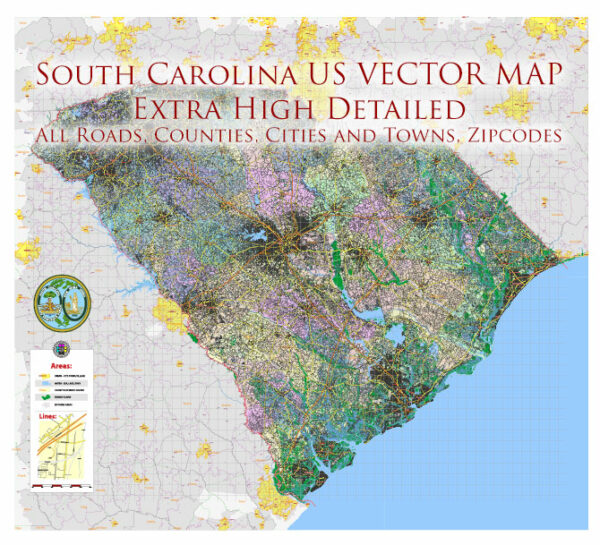South Carolina’s urban development has a rich history shaped by various factors, including economic shifts, population growth, and cultural influences. Here is a broad overview of the state’s urban development history:
- Colonial Era (17th-18th centuries):
- The earliest urban centers in South Carolina emerged during the colonial period, with Charleston being a prominent port city. Its strategic location and natural harbor contributed to its growth as a key trading and commercial hub.
- Antebellum Period (19th century):
- The economy of South Carolina was heavily reliant on agriculture, particularly rice and indigo cultivation. Plantations were scattered across the state, and urban development was centered around port cities like Charleston. The wealth generated from the plantation economy influenced the architecture and cultural life of these urban centers.
- Civil War and Reconstruction (mid-19th to late 19th centuries):
- The Civil War had a significant impact on South Carolina, and its aftermath during the Reconstruction era led to economic and social changes. Urban areas faced challenges, but they also became centers for rebuilding and development.
- Industrialization (late 19th to early 20th centuries):
- Industrialization gained momentum in the late 19th century, leading to the growth of textile mills and other industries. Cities like Greenville and Spartanburg saw increased urbanization as a result of industrial development.
- 20th Century:
- The mid-20th century saw further urban expansion, influenced by factors such as the growth of the automotive industry and military presence. Cities like Columbia, the state capital, experienced growth in population and infrastructure.
- Civil Rights Era:
- Like many Southern states, South Carolina experienced the impact of the Civil Rights Movement in the mid-20th century. Cities became focal points for activism, and changes in legislation during this time had a lasting effect on the social and urban landscape.
- Late 20th Century to Present:
- Urban development continued in the late 20th century, with a focus on modernization, infrastructure, and diversified economic activities. Cities like Charleston, Greenville, and Columbia have seen revitalization efforts, including historic preservation and the development of cultural amenities.
- Tourism and Coastal Development:
- The state’s coastal areas, including Myrtle Beach and Hilton Head Island, have become major tourist destinations. This has led to significant development in these regions, with a focus on resorts, entertainment, and recreational facilities.
- Challenges and Opportunities:
- Urban development in South Carolina faces challenges such as infrastructure needs, affordable housing, and managing the balance between growth and preservation of natural resources. Efforts are ongoing to address these issues and promote sustainable urban development.
Overall, South Carolina’s urban development history reflects a blend of economic, social, and cultural factors that have shaped its cities and communities over the centuries. The state continues to evolve, embracing both its historical roots and the demands of a modern, dynamic society.



 Author: Kirill Shrayber, Ph.D.
Author: Kirill Shrayber, Ph.D.